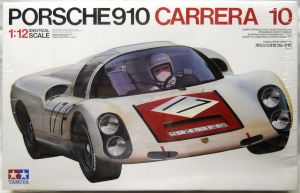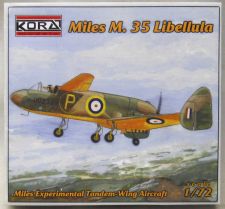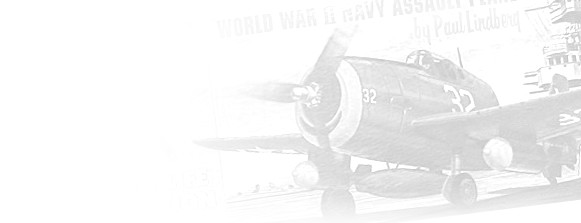Ideal Aeroplane & Supply Ideal US Navy Submarine - 24 Inch Wooden Model
Wood Model Kit, Box Condition: Good

Sold
Very rare, large-scale model of a 1938 US Navy Fleet submarine and probably the largest kit every made of this subject. This was originally a solid pre-carved hull kit; however, the war effort resulted in this being a wood-covered bulkhead and stringer hollow kit. Includes printed wood frames, factory-cut strip wood and wood planking strips, bow and stern blocks, a factory sealed wax paper bag of smaller parts, full size plans, two sealed envelopes of Casco Powdered Casein glue, sandpaper and two large sheets: one is the full size plans in excellent condition and the other is a large sheet explaining and illustrating the wartime hull construction. It also includes many patterns and templates to aid in carving the bow and stern blocks. The instructions have plans and text with detail drawings down the rigging details. The kit has never been started. The small parts are still factory sealed. The larger parts were never sealed and have been inventoried complete. Includes all paperwork.
Ideal Aeroplane & Supply Destroyer Escort (1945) - 18 Inches Long, 1505
Wood Model Kit, Box Condition: VG

Sold
Rare and dated 1945. This is a very nicely detailed kit for that time and features a hollow 18" preformed hull of wood composite. It is ready for primer and paint. The hull is in factory-new condition with no cracks and no warps. Includes an opened wax-paper bag of small parts, three big sheets of quality printwood, wood stock and dowels as required and plans. The plans are excellent and have all required elevation drawings, numerous detail and assembly drawings, full text instructions and even a painting guide. Never started and complete. It even includes the original factory packing paper.
Tamiya Ferrari 312T, 1/12, BS1219
Plastic Model Kit, Box Condition: Sealed NM

Sold
Still factory sealed. Very highly detailed, large scale kit.
Tamiya Porsche 910 Carrera 10, 1/12, 12003
Plastic Model Kit, Box Condition: Sealed Exc+

Sold
Still factory sealed. This is a large multi-media kit that is highly detailed inside and out.
Amodel TWO Hydroplane SPL - Chetverikov SPL (HIDRO-1) - Designed As A Submarine Aircraft, 1/72, 7271
Plastic Model Kit, Box Condition: VG

Sold
SALE!! Includes both kits in the one box shown. They have never been started and both are still in the factory sealed bag. Includes decals and instructions. The Chetverikov SPL (or HIDRO-1) was desgiend and built by a group of engineers under the direction of I.V. Chetverikov in 1934. The new seaplane was intended to be placed on a submarine in a water-tight hanger that was only 2.5m in diameter and 7.5 meters long. Dismantling and storage was done manually in a total of 3 to 4 minutes and assembly with preparation for take off took 5 minutes. In 1936 the SPL was demonstrated at the international exhibition in Milan. Later this aircraft set several international records.
Dragon Cyber-Hobby IJN Type 2 Ka-Mi Amphibious Tank With Floating Pontoon - Early Version - Smart Kit, 1/35, 6699
Plastic Model Kit, Box Condition: Sealed NM

Sold
Still factory sealed. Limited production model that is highly detailed.
Matchbox TWO Aeritalia G-91Y - 32nd Squadron 13th FB Group Brindishi-Casale Italy 1978 / 8th Sq 101 FB Group Cervia-Milano Marittima Italy 1976, 1/72, PK-34
Plastic Model Kit, Box Condition: Good
Sold
SALE!! Includes two kits in the one box shown. Kit #1 is never started and the actual aircraft is inventoried complete with all parts, including decals and instructions. NOTE: missing display stand. NOTE: Kit #2 has minor and 'professional' quality subassembly as follows: wing halves; drop tank, bomb and rocket pod halves. There is no other assembly. Inventoried with all aircraft parts present but NOTE: missing display stand. Includes decals and instructions. Dated 1979 and nicely molded for that time. Markings for 32nd Squadron, 13th Fighter Bomber Group and 8th Squadron, 101st FB Group from 1976.
Apogee Saturn V - 62 Inch High Flying Model Rocket Or Static Display, 1/70, 05026
Multimedia Model Kit, Box Condition: VG
Sold
Sells new for $358. Incredibly well detailed, museum-quality replica that stands over 5 feet tall. Scaled from actual plans and contains all the surface tail of the real rocket. Can be built for flying scale or as a museum quality static model (many are in museums). Measures over 62" tall and 5.6" in diameter when assembled. Never started and all parts are either in factory sealed bags or inventoried complete including decals and instructions. This kit came in a very sturdy white box that it was originally shipped in; unless you specify otherwise, I will be shipping it in that same box. If you wish to have it put into yet another box additional shipping will apply.
Revell MH-47E Chinook HC.3 Gunship - US Army SOA Or RAF Versions - (MH47 E), 1/72, 04480
Plastic Model Kit, Box Condition: Sealed Exc

Sold
Still factory 'round tape' sealed. This is the armored gunship version of the venerable Chinook. It is a very nicely molded kit featuring 207 pieces, all recessed panel lines, excellent cockpit and cargo interior, optional position rear loading ramp, two miniguns, sensors and decoy pods, correct antenna array, external rescue winch, in-flight refueling probe and more. Includes decals for USA or RAF versions.
Arii Cessna Skymaster T337 - (ex Eidai), 1/72, A704-500
Plastic Model Kit, Box Condition: Sealed NM

Sold
Still factory sealed. From quality Eidai molds. Very crisply molded featuring very fine recessed panel lines, complete cockpit and passenger interior and full color decals.
Resicast Sherman BARV, 1/35, 35-126
Plastic Model Kit, Box Condition: Sealed NM

Sold
Very rare and still factory sealed. This is the only 1/35 scale model of this subject. Made in Belgium by Resicast and now out of production. This is a highly detailed and complete resin kit.
Resicast Ram Badger - Canadian Tank, 1/35, 35-155
Plastic Model Kit, Box Condition: Sealed Exc

Sold
Very rare and still factory sealed. This is the only 1/35 scale model of this subject. Made in Belgium by Resicast and now out of production. This is a highly detailed and complete resin kit of this Canadian-built tank. This turretless variant was based on the Kangaroo APC, modified to use the Mk.II flamethrower already made famous by the Wasp (based on the Universal Carrier). The turret ring was covered, and surplus auxiliary turrets were mounted on top of these. The second series were complete vehicles, the turret receiving the flamethrower apparatus. Most served in Holland.
Kora Kokusai Ta-Go - Japan Suicide Plane, 1/72, 7233
Resin Model Kit, Box Condition: VG

Sold
Very rare. This excellent, limited edition model features main airframe parts in professional-grade resin castings, all fine recessed surface detail, a fret of photoetched parts, very good cockpit, printed instrument panel and more. Includes painting guide and full decals. The kit has never been started. The parts are still in the internal factory sealed bags and includes decals and instructions. The Ta-Gō was an attempt at creating an easily made and cheap kamikaze aircraft in anticipation of Operation Downfall and Operation Olympic. The plane would have been used by special units to ram advancing Allied tanks, infantry and boats. With great difficulty, several prototypes were built, flown and modified. Development ceased with the surrender and occupation of Japan. Allied forces found on the the improved prototype aircraft.
Kora Miles M.35 Libellula - (M-35), 1/72, 7245
Resin Model Kit, Box Condition: Exc

Sold
Very rare. This excellent, limited edition model features main airframe parts in professional-grade resin castings, all fine recessed surface detail, a fret of photoetched parts, excellent full cockpit, printed instruments, mint condition canopy (not yellowed, still perfectly clear) and more. Includes painting guide and full decals. The kit has never been started. The parts are still in the internal factory sealed bags and includes decals and instructions.
Azur Arsenal VG-36 - French and Luftwaffe - (VG36), 1/72, A029
Plastic Model Kit, Box Condition: Sealed Exc

Sold
Still factory sealed. This is a high quality, limited production model of a rare subject. It features recessed panel lines, photoetched details and full decals.
Unicraft Cheranovsky BICh-17, 1/72
Resin Model Kit, Box Condition: Sealed NM

Sold
Still factory tape sealed. Rare. Nicely detailed, limited-run resin kit. Boris I. Cheranovsky was an outstanding Soviet aircraft designer whose highly unconventional airplanes and gliders were always very advanced and often came ahead of time. Most of his designs utilized the parabolic wing and the tailless layout. The BICh-17 fighter design was started in 1935 and was to utilize the unique Kurchevsky APK recoilless cannon. Conceived as an all-wooden airplane it was to be powered with the M-22 (480hp) engine and use the well proven and previously designed parabolic wing. Two APK cannon were installed within the wing. Main landing gear was to be retractable towards the fuselage. The prototype was 60% ready when all programs were canceled in 1936 due to yet another of Stalin's "purges".
Legend Model Boats 1958 Cavalier 25 Foot Express Cruiser - For R/C Or Static Display, 1/10, 701
Wood and Metal Model Kit, Box Condition: Exc

Sold
Very rare. This is a high quality and detailed model measuring 30.5 inches long and a beam of 10.5 inches when assembled. Features factory-cut quality hardwood parts and stock as required, die-cut and expanded pvc parts, laser cut detail parts, cast metal and turned aluminum fittings, step-by-step plans and instructions including power and radio installation, parts for a display stand and more. The kit has never been started. The small parts are still in the factory bags; the parts that were never factory sealed have been inventoried complete. Includes all paperwork. Legend Model Boats are designed and distributed by Rich Koll of Long Branch, NJ. The kits are manufactured to his specifications by Dumas.
Tamiya F-16CJ Fighting Falcon Block 50, 1/32, 60315
Plastic Model Kit, Box Condition: Sealed NM

Sold
Still factory sealed. This model is superdetailed inside and out & features all recessed panel lines, superb cockpit, detailed gear wells, full engine, detachable after assembly, armament load, engine dolly, photoetched parts, pilot figure and four types of markings.
Tamiya F-16C Thunderbirds, 1/32, 60316
Plastic Model Kit, Box Condition: Sealed Exc

Sold
Still factory sealed. Rare kit that is superdetailed inside and out & includes extensive Thunderbirds decals.
Pavla Boeing P-26A - USAAF 18th Pursuit Group Wheeler Field Hawaii / Model 281 Chinese Air Force 1935-1937 / Phillippines Air Force Batangas Field Late 1942 / USAAF 1st Pursuit Group Selfridge Field 17th Pursuit Squadron - BAGGED, 1/72, 72046
Plastic Model Kit, Box Condition: No Box

Sold
NOTE: bagged kit; there is no box. The box is shown for reference only. This model is easily the finest 1/72 scale P-26 model ever made. Well detailed, limited issue model features optional parts for the variants listed, injection molded parts with recessed surface features, numerous high-definition resin details, very good cockpit, excellent engine & exhaust, rigging diagram and more. Never started and the resin parts are still in the internal factory sealed bag; the other parts have been inventoried complete. Includes decals and instructions.
